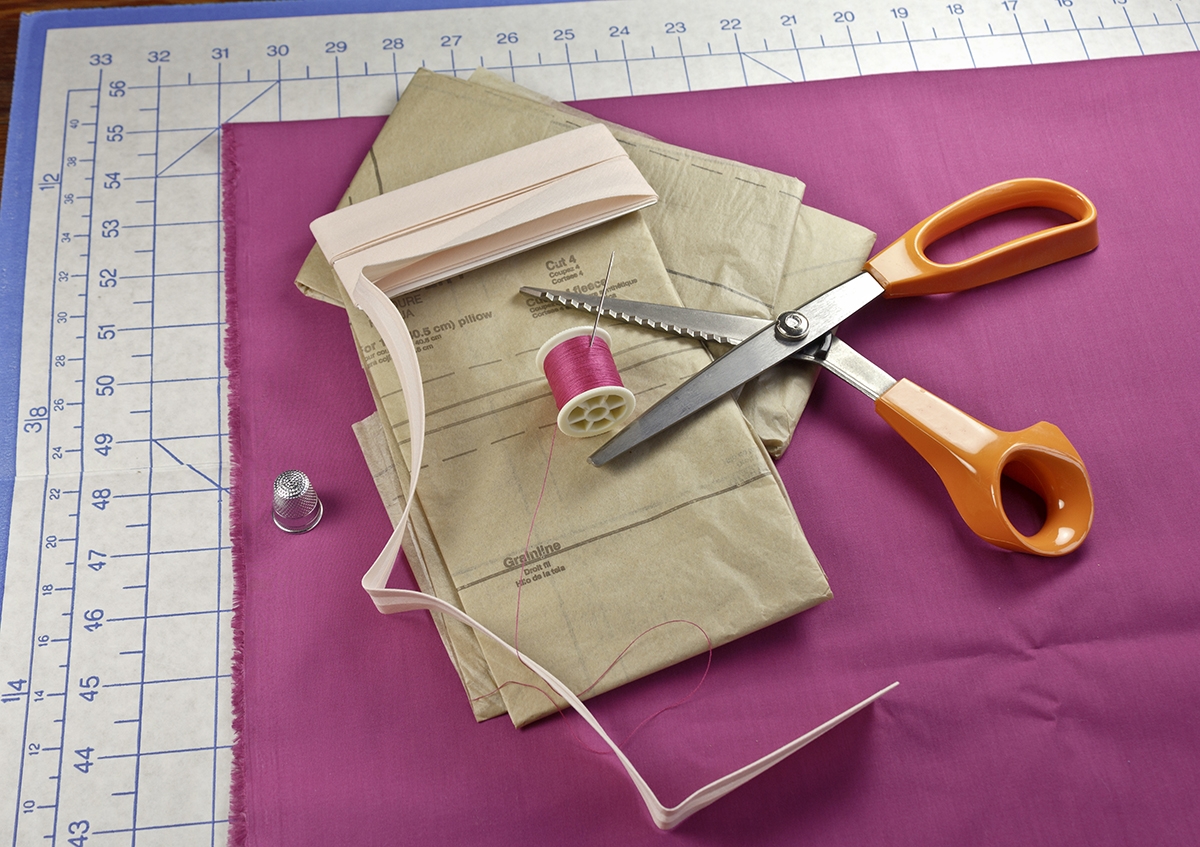You are all excited. You have just got your hands on your very first pattern and can’t wait to get started on your latest sewing project. But where do you start? There are some basic facts you should know when following a pattern and we are here to help you along. Read this short guide and you can get started right away.
Examine the Pattern Packet
The back of the pattern packet itself will often list all the equipment you need including the amount of fabric that you will need to complete the project. Make sure that you have all the items necessary the look inside the packet.
The Pattern Layout
As well as telling you what you will need to create the garment the packet will include a layout illustration. Now, this is really where you must concentrate because the information contained here is invaluable. The layout illustration tells you how you should place your fabric pieces on the fabric. As well as showing you the position of the fold against the selvage, the layout illustration will also tell you how to maximize the fabric that you have got.
The pattern itself is normally made up of a series of pieces. These will be presented to you in a series of sheets, like tracing paper, with the pattern pieces etched on in black ink. Each piece has a corresponding number to guide you through the production process. Follow the numbers to ensure that you do everything in the right order and refer to the instructions sheet as closely as possible.
In some cases, the pattern may include some pieces that you will not need at all. After you have reviewed the pattern and worked out how you are going to use it, cut out the pieces that you know you will not need. This will minimize the amount of work in front of you and help you visualize how the garment will be coming together once you get started. It also cuts down the amount of tissue that you have to deal with!
Laying it Out
Once you feel that you are ready to get started, get your fabric and lay it out. Pin the pattern pieces onto the fabric and follow the instruction sheet closely. It may tell you how you should lay the piece on the grain.
Getting the Details
Once you have the basic shape cut out, you need to start transferring some of the detail onto the fabric. If you are, for example, making an item of clothing, it is vital that your fabric is marked with the precise location of pockets or seams. To do this you will need tracing paper and a fabric marker.
Trace over the pattern with the marker and mark up all the grain lines, hems and details that will turn your fabric into your intended item. It is vital that you do this as precisely as possible because if you don’t, that polished finish you desired will just not be there.
Recap
Following patterns requires quite a bit of time and a lot of concentration. It’s not just a case of pinning the paper to the fabric and cutting. Instead, you have to actually understand what the pattern is asking you to do and this can take some practice. You have to interpret the lines and the numbers and make it work. Pay some close attention and you will be able to master the pattern.

